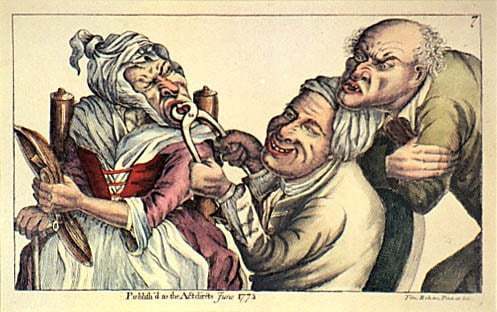Early man didn’t really have any tooth worries. Not only did the people in pre-agricultural societies not have any sugar or processed foods to worry about, the life expectancy was so low that you were often dead before tooth rot set in anyway. However, when mankind started to learn how to farm, tooth decay started getting real. Indeed, archaeologists have found evidence that people living more than 15,000 years ago were suffering from cavities. What’s more, they were also using flints to clean their teeth and to even knock rotting teeth out.
Shockingly, such primitive dentistry was to remain the norm for many centuries. While the people of ancient Egypt, Rome or Greece might have been pioneers in many fields, including maths, astronomy and even medicine, their knowledge of oral health was basic to say the least. And this approach to dental health continued right through the Middle Ages. In fact, it was only really with the Enlightenment that real, expert dentists started to emerge. But even then, treatments were carried out without any anaesthetics.
The history of dentistry, therefore, makes for some pretty tough reading. Going to the dentist could be bloody, gory, painful and often even fatal, as the below shows. So, here we present the history of dentistry, blood and all:

Bow drills were used 9,000 years ago
Fear of the dentist’s drill is not a new phenomenon. In fact, archaeologists have discovered evidence that humans were facing the trauma of going under the drill some 9,000 years ago. Of course, the equipment used back them was far more primitive than today’s advanced tools. However, the general aim and method was the same – drilling into the tooth to address decay and prevent a cavity from growing any bigger.
The first evidence of ancient peoples using dental techniques goes as far back as 7,000BC. Archaeologists studying the ancient Indus civilization, who settled the Indus Valley between modern-day India and Pakistan, found bow drills they believe were used for primitive dental surgery. With the string of the bow pulled taught, the drill bit would go into the affected tooth and, it was hoped, drain all the infection out. Of course, all this was done slowly and carefully, and all without any anaesthetics to ease the considerable pain.
It’s widely assumed that these first dentists were actually primitive jewellers. During the ancient Indus civilization, jewellery was very popular and bow drills were used to bore holes in beads to make necklaces and bracelets. Since they had the necessary equipment, these beadmakers would also be employed as makeshift dental surgeons, though their excellent hand-eye coordination and precise technique would likely have made up for their lack of medical knowledge. And, of course, if these beadmakers were the first dentists, then their assistants would have been the first dental assistants. After all, at least two other people would have been required to hold the patient down during the painful procedure.

